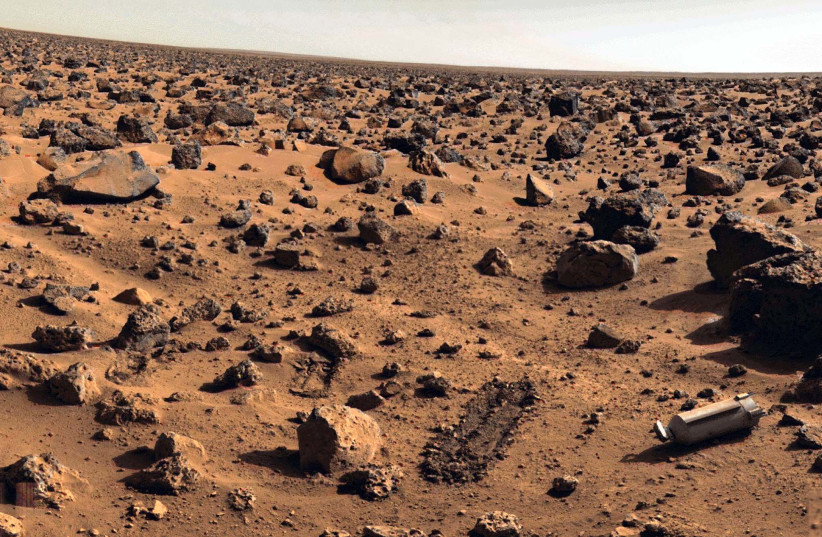Mars underwent major climate change about 400,000 years ago, at the end of the Red Planet's last ice age, according to a new study published last week.
The peer-reviewed study published in Nature examined data concerning dunes on Mars obtained by high-resolution orbital cameras and the Zhurong rover's terrain and multispectral cameras, surface composition analyzers, and meteorological measuring instruments.
Researchers from National Astronomical Observatories, Institute of Geology and Geophysics and Institute of Tibetan Plateau Research of the Chinese Academy of Sciences, in collaboration with researchers from Brown University, assessed the surface structure and chemical composition of the dunes in order to determine the age of the dunes and the prevailing wind directions at a number of locations.
The team of researchers found that the prevailing wind direction in the Utopia Plain, where the Zhurong rover touched down, shifted almost 70 degrees from northeast to northwest, eroding crescent-shaped dunes formed during the ice age into dark, longitudinal ridges.
"The exploration and research on the climate evolution of Mars has been of great concern for a long time. Mars is the most similar planet to Earth in the Solar System. Understanding Martian climate processes promises to uncover details of the evolution and history of Earth and other planets in our Solar System," said lead author Prof. Li Chunlai from the National Astronomical Observatories of the Chinese Academy of Sciences (NAOC).

Changes in Mars' tilt could have pushed climate change
The researchers estimated that a change in the angle of the rotational axis of Mars caused the Red Planet to exit the ice age, leading to effects on the morphology, orientation, physical properties and layering of dunes.
Other past studies have estimated that changes in Mars' rotational axis could cause climate change on the Red Planet. Mars' rotational axis changes relatively frequently, with substantial changes recorded on timescales of hundreds of thousands to millions of years. In 2007, researchers from the University of Hawaii theorized that a wobble in Mars' axis led to vast amounts of ice shifting between the poles and the rest of the planet every 120,000 years, as the wobble caused big changes in the amount of sunlight reaching different parts of Mars.
"Understanding the Amazonian climate is essential to explain the current Martian landscape, volatile matter reservoirs, and atmospheric state, and to relate these current observations and active processes to models of the ancient climate of Mars. Observations of the current climate of Mars can help refine physical models of Martian climate and landscape evolution, and even form new paradigms," said Chunlai. "We will continue to study both Amazonian and present-day climate to promote the knowledge regarding the last two billion years of Martian climate history, including its environment and processes."
